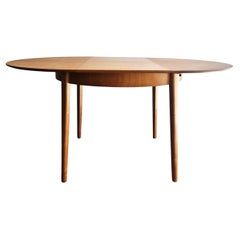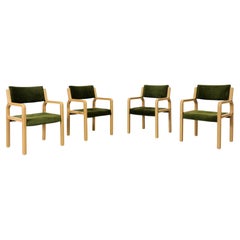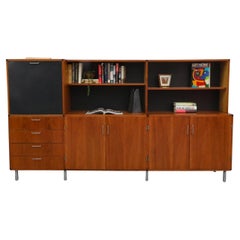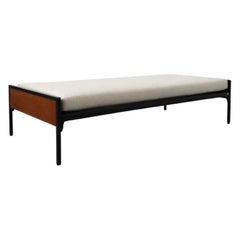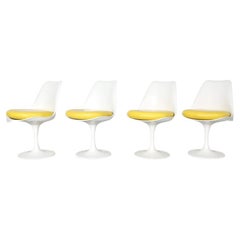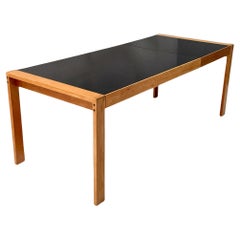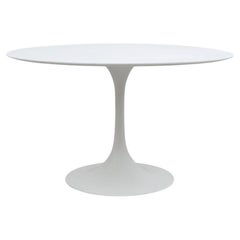UMS Pastoe
Dutch furniture company UMS Pastoe was established in 1913 by German-Jewish entrepreneur Frits Loeb and became rapidly successful largely owing to its reputation for well-made tables and chairs. Today, however, the brand is best known by collectors for the modular sideboards, storage cabinets and other spare, streamlined case pieces that it produced during the postwar years.
Influential mid-century modernist designer Cees Braakman had been creating furniture since his teenage years when he was promoted to head of design at Pastoe in 1948. The Utrecht-born designer took over for his father, Dirk Braakman, who had by then been managing the company for more than 20 years and had designed a variety of furnishings for the manufacturer by himself. A year before he assumed his new role at Pastoe, Cees visited the United States where he became enamored with the designs of Charles and Ray Eames and the other creative minds associated with legendary American furniture manufacturer Herman Miller.
While many Dutch designers who are now celebrated by vintage furniture collectors — names like Gerrit Rietveld and Friso Kramer are in this list — found inspiration in Piet Mondrian and the country’s De Stijl art movement, they also looked to Scandinavian modernists such as Alvar Aalto and Americans such as the Eameses. Cees Braakman was no different.
Braakman’s 1940s-era tour to the States included a visit to the Herman Miller factory in Zeeland, Michigan. At the time, architect-designer-journalist George Nelson was director of design at the firm and had enlisted a range of designers to collaborate with Herman Miller and create what are now icons of mid-century modernism. Braakman took notice of industrial manufacturing techniques at HM and in particular, the company’s innovations in furniture design owing to experimentation with molded plywood and fiberglass-reinforced plastic.
The Dutch designer introduced the first line of modern furniture at UMS Pastoe thereafter — a table, a chair, a bed and more created in molded plywood and featuring oak veneers, specifically tailored for smaller living spaces. Braakman was convinced that Pastoe should move on from the restrictions that a collection or set of furniture presented to consumers. Furniture for a bedroom, for example, should be practical and built as individual pieces that could be adapted as more space became available. New production methods and creative marketing came into focus under Braakman’s leadership, and his own lines of oak and birch furniture — which were created around cupboards that could be reconfigured as needed, or armchairs that could be combined to form a sofa — earned acclaim and were commercially very successful.
UMS Pastoe was recognized for its innovative furniture at the Milan Triennial in 1957 and Le Signe d’Or in Belgium, and Cees Braakman’s work can today be found at the Stedelijk Museum in Amsterdam. Over the years, designers such as Jan van Grunsven, Radboud Van Beekum and Rob Eckhardt collaborated with UMS Pastoe.
Find vintage UMS Pastoe furniture on 1stDibs.
| Average Sold Price |
| $2,900 |
| Styles |
| Materials |
| Related Creators |
1950s Dutch Mid-Century Modern Vintage UMS Pastoe
Birch, Plywood
1970s Dutch Mid-Century Modern Vintage UMS Pastoe
Plastic, Upholstery
Mid-20th Century Dutch Mid-Century Modern UMS Pastoe
Chrome
Mid-20th Century Dutch Mid-Century Modern UMS Pastoe
Metal
1960s Dutch Mid-Century Modern Vintage UMS Pastoe
Formica
Mid-20th Century Dutch Mid-Century Modern UMS Pastoe
Upholstery, Acrylic
1970s Dutch Mid-Century Modern Vintage UMS Pastoe
Oak
1960s Dutch Mid-Century Modern Vintage UMS Pastoe
Metal
UMS Pastoe Sale Prices
| Sold Date | Sold Price | Category | Material | Creation Year | |||||||||||||||||||||||||||||||||||||||||||||||||||
|
| $2,900 |
Average sold price of items in the past 12 months |
| $1,456-$4,523 |
| Sold price range of items in the past 12 months |
